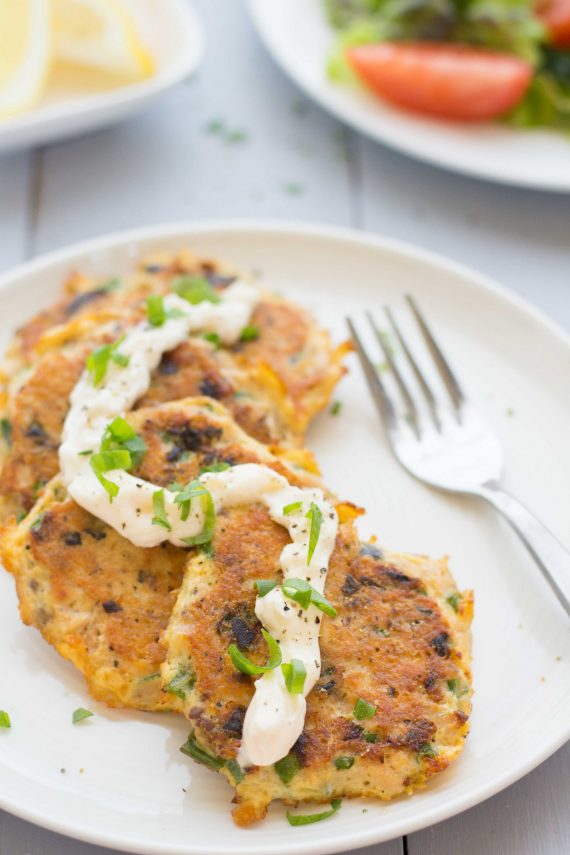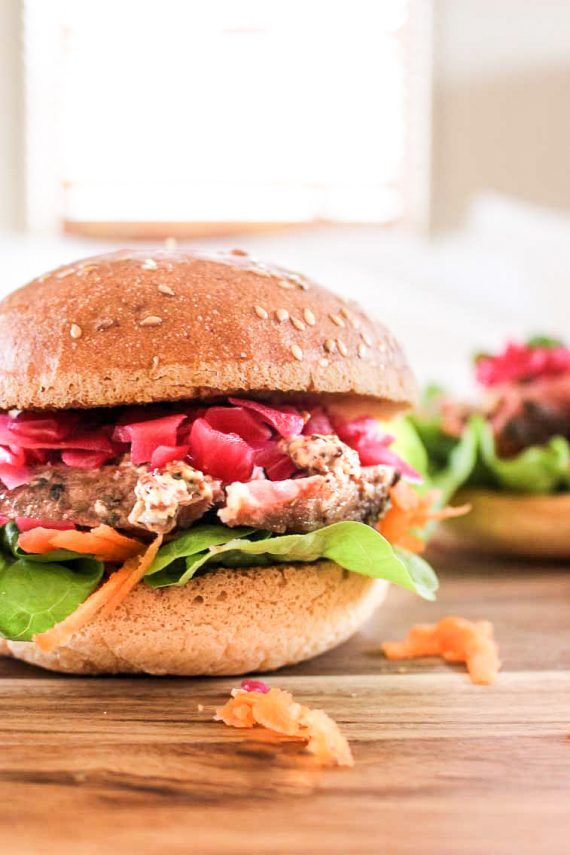Many of my followers swear that bananas are problematic and are causing some of their tummy troubles. This begs the question, are bananas really a trigger food? Is it FODMAPs or something else? Let’s take a closer look.
Do Bananas Contain FODMAPs?
The short answer is yes they do. Let’s look at the research.
Common bananas, also called Cavendish bananas, are large long bananas that are green when they are unripe and then transition to yellow as they ripen. These bananas are low FODMAP in a 1 medium banana serving when they are fresh and firm (just yellow with no brown spots) and become high FODMAP for fructans when they are ripe (yellow with brown spots) (1). The high levels of fructans in ripe bananas can trigger unpleasant symptoms for some people. When assessing symptoms and figuring out trigger foods, just keep in mind that FODMAP reactions normally take 6 to 24 hours to occur (3).
Sugar bananas, also called lady finger bananas, are shorter and fatter than common bananas. The ripeness of these bananas also appears to influence their FODMAP levels. According to Monash University, unripe sugar bananas are low FODMAP in very large serves, whereas ripe sugar bananas are high FODMAP for fructose in large servings over 190g (2).
Can I Still Eat Bananas while on the Low FODMAP Diet?
Yes you can, however portion size and ripeness will be important factors during the strict low FODMAP phase of the diet. Try testing your tolerance level to 1 medium (95g) just ripe (firm) common banana and see how you go. In theory, this serving size and ripeness level are low FODMAP and should not trigger symptoms (2). Avoid consuming more than 30g of ripe banana while you are gaining good symptom control (2). In the reintroduction phase of the diet you can test your tolerance to larger serves of ripe banana.
Are you ready to take control of your gut symptoms?
No thanks, my gut is perfect.
Article continues below
When it comes to sugar bananas, Monash data suggests that 1 medium (112g) firm sugar banana is low FODMAP (2), and this would be a good place to start testing your tolerance levels.
#FODMAP Tip: Peel and freeze your firm bananas in ziplock bags before they start getting brown spots. Then use the bananas to make low FODMAP smoothies, banana ice cream, or banana butterscotch pudding. Freezing bananas stops the ripening process, keeping them low FODMAP.
Is There Anything Else In Bananas That Can Cause Issues?
Ripe bananas can also be high in amines (4). Amines are not FODMAPs, but rather a type of naturally occurring food chemical, which in some people can cause gastrointestinal symptoms along with a range of other reactions (4). Unripe bananas also contain resistant starch, again this is not a FODMAP, however it is a type of prebiotic fibre which is fermented by our gut bacteria and can contribute towards gastrointestinal symptoms (5 6). If you are feeling concerned, make sure you chat to a dietitian who is trained in food intolerances.
Final Thoughts
There is no need to avoid bananas while in the first phase of the low FODMAP diet. Firm common bananas make great grab and go snacks and are a fantastic way to pad out your breakfast. Try testing your tolerance to firm bananas first and see how you go.











Are overripe pineapples high fodmap? I ate out, one slice of ovrripe pineapple at. 6 pm, lotsa intestinal activity that night…
Hi Toni,
Right now I don’t have any extra information on overripe pineapple. It is possible that the FODMAP content changes but we won’t know until overripe pineapple is tested in a laboratory. Once your symptoms are settled you could try a small amount of pineapple again and see if you get the same result. That will let you know if it was that food that triggered your symptoms.
You suggest putting them in the fridge, but according to recent testing by Monash, storing them at cold temperatures may increase the FODMAP content of bananas. I found that eating bananas that were fully green when I brought them the day before, sometimes triggered symptoms after keeping them overnight in the fridge too. When they are stored at room temperature, provided they are firm, I am fine.
Hi Alice,
Thanks for commenting. We recommend putting bananas straight into the freezer before they ripen if you want to use them in smoothies or baking. Freezing the banana stops the ripening process completely. Otherwise we suggest you store the bananas at room temperature and eat them before they develop brown spots.
What I think you are talking about is putting the bananas in the fridge so they ripen slower. The cooler temperate in the fridge will encourage the banana to produce fructans while it continues to slowly ripen. This can increase the FODMAP levels in the banana and might be why you tolerate these bananas less.
So either store your bananas at room temperature and eat them before they develop brown spots. Or pop them straight into the freezer and use the frozen banana to make low FODMAP smoothies or ice cream.